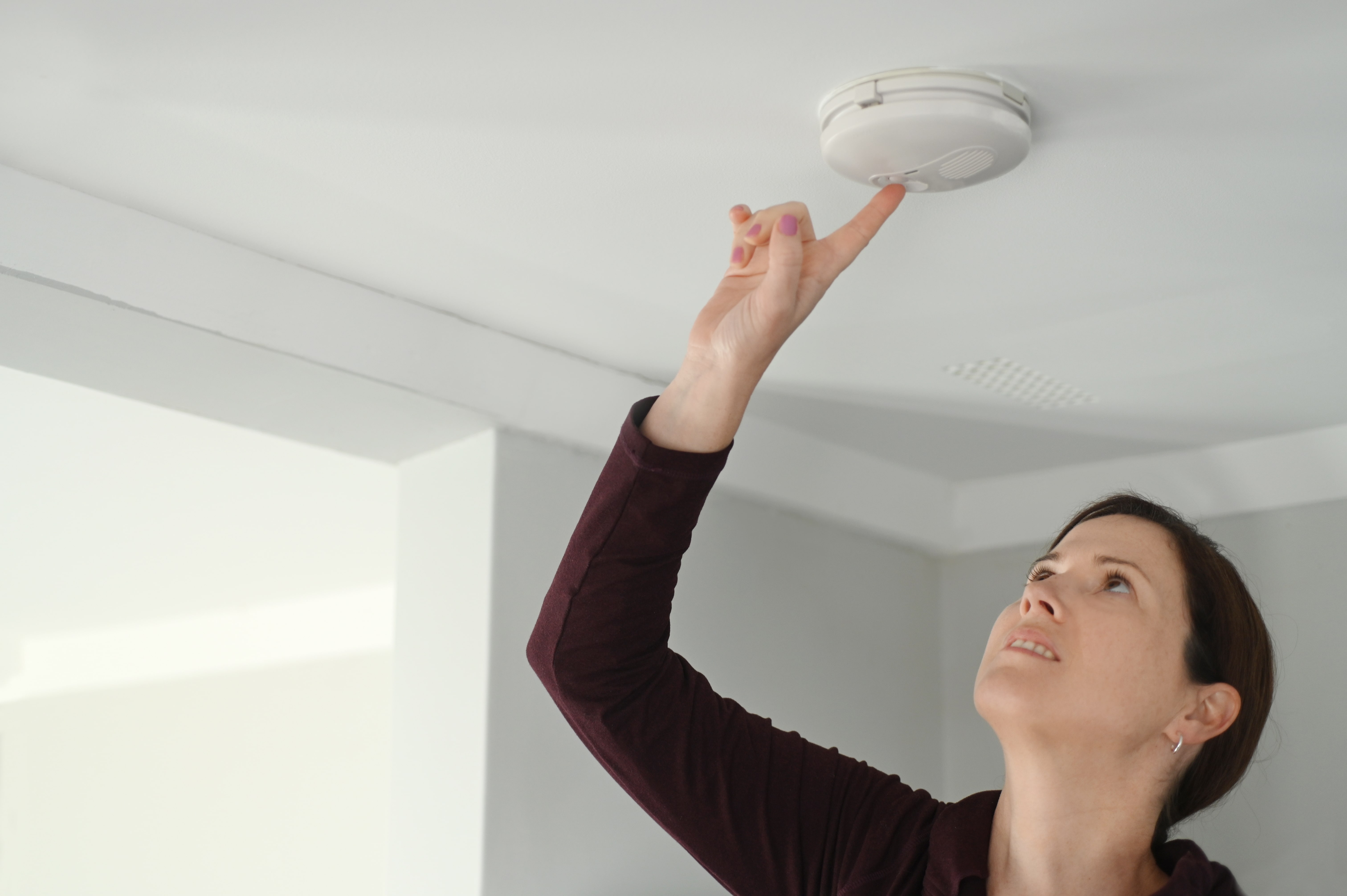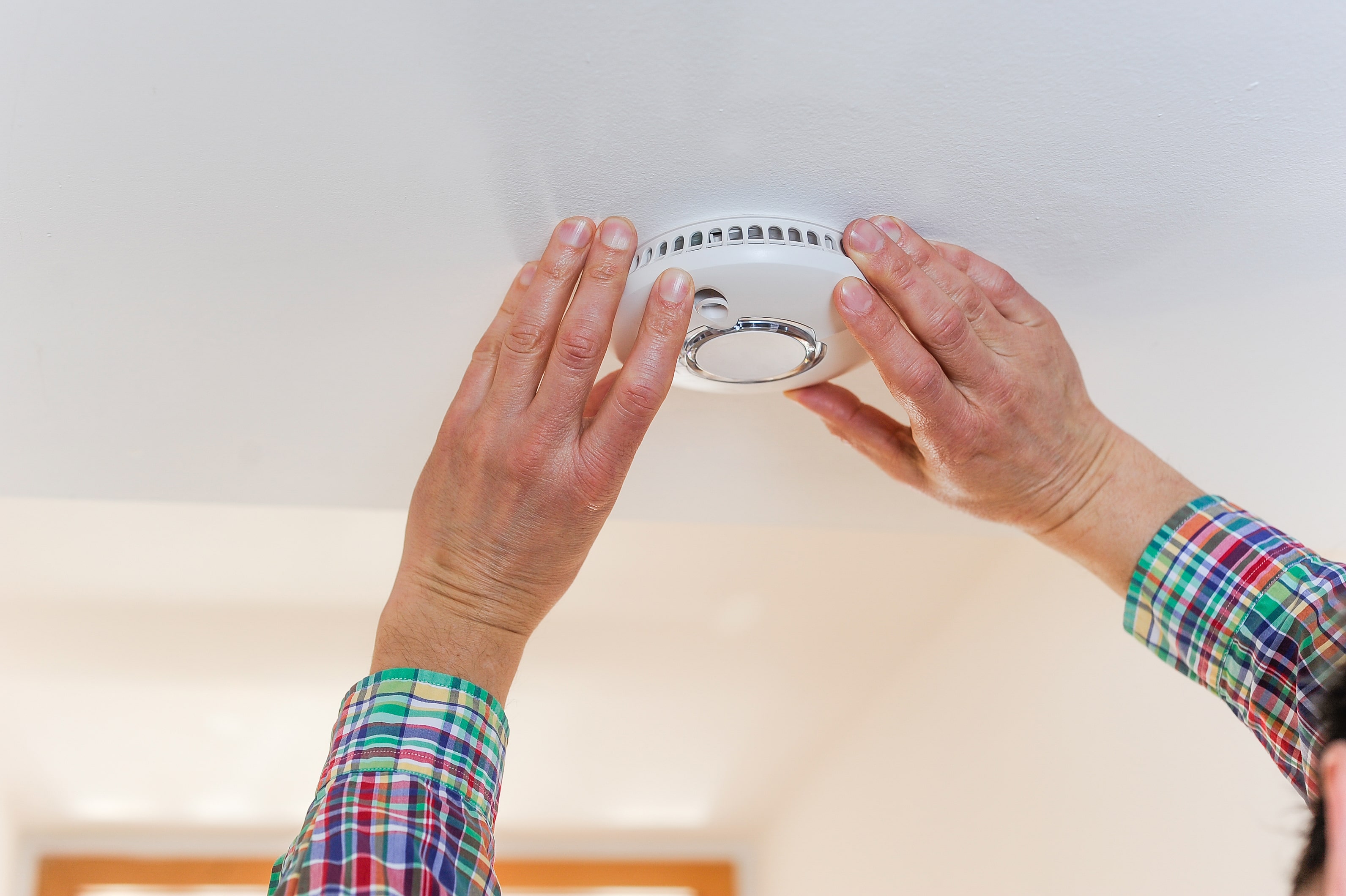The law on fire alarms is changing: what do you need to know?
The law on fire alarms is changing in Scotland from 1 February 2022, and affects all homes in Scotland.
We have included all the Scottish Government information you need to know on this change of the rules, including what the change in fire alarms law means for Scottish homeowners, homebuyers, landlords and tenants, how it affects your property and what you need to do to comply with the new rules on fire alarms.

What is the new law on fire alarms?
The law around fire alarms in Scotland is changing, meaning that every home in Scotland must have interlinked fire alarms installed by 1 February 2022.
Interlinked means that if one fire alarm goes off, they all go off, so that you will always hear an alarm wherever you are in your home.
The law applies to all Scottish homes, and it is the property owner’s responsibility for ensuring that their property has interlinked fire alarms in place.
When does the new fire alarm law come into place?
All properties in Scotland must have a system of interlinked fire alarms in place by 1 February 2022.
What kind of fire alarms do you need to install?
By 1 February 2022, every home in Scotland must have the following fire alarm system in place:
- One smoke alarm in the living room or the room you use the most
- One smoke alarm in every hallway or landing
- One heat alarm in the kitchen
All smoke and heat alarms must be mounted on the ceiling and be interlinked.
If you have a carbon-fuelled appliance, like a boiler, fire, heater or flue, you must also have a carbon monoxide detector in the same room as the appliance. This does not need to be linked to the fire alarms.
You can use either sealed battery alarms or mains-wired alarms.
Both types of alarm are interlinked by radio frequency, meaning they do not need WiFi.
If you choose to use battery fire alarms, they must be sealed tamper-proof units and have long-life lithium batteries, which can last up to 10 years. You may be able to fit this type of alarm yourself and they do not need an electrician.
Mains-wired alarms are cheaper, but if you choose this type of fire alarm, they must be fitted by a qualified electrician and must be replaced every 10 years. It’s worth noting that you may also need to redecorate after having mains-wired fire alarms installed in your home.
If you also need a carbon monoxide alarm and it is battery-operated, it must have a sealed battery for the duration of its lifespan.
Where can you buy approved fire alarms?
The Scottish Government does not have a list of approved fitters or suppliers for interlinked fire alarms.
You can buy both types of fire alarms online or from a number of retailers, and any qualified electrician can install the mains-wired type of alarm.
You just need to check that each alarm complies with the following standards:
Smoke alarms: BS EN14604:2005
Heat alarms: BS 5446-2:2003
Carbon monoxide detector: British Kitemark EN 50291-1
The Nest Protect System will not meet the standard. This is because they do not meet the requirements for a heat alarm under the relevant British Standard. British Standard (BS 5839-6:2019) states that only heat alarms should be installed in kitchens.
What do homeowners need to do to comply with new laws on fire alarms in Scotland?
The new law on fire alarms applies to all Scottish homes, and it is the property owner’s responsibility for ensuring that their property has interlinked fire alarms in place.
This means that homeowners must ensure their property has a system in place, and landlords are also obliged to install an interlinked fire alarm system in every property they own.
Any costs will be the responsibility of homeowners and landlords. The cost incurred will depend on what fire alarm system is currently in place, and the alarms you choose to install.
Homeowners must pay for any ongoing work needed on their own property, and must meet the new fire alarm and carbon monoxide alarm standard.
If you live in a tenement or block of flats, you do not need to link your fire alarm within your own property to alarms in other properties in the same building. There is no need for alarms to be fitted in communal hallways and stairways.
If you own your home as part of a shared ownership scheme, responsibilities will be set out in your occupancy agreement. However, generally it is understood that it will be your responsibility as the proportion owner to meet the new fire and smoke alarm standard.
What do landlords need to do to comply with new fire alarm laws?
If you are a landlord in Scotland, the new standards for fire and smoke alarms extend those which currently apply in the private rented sector to housing of all tenures. Landlords should already be complying with this.
What should tenants do about the new fire alarm laws in Scotland?
If you are a tenant of a privately rented property, it is your landlord’s responsibility to ensure these fire alarms and other fire safety practices are adhered to. Tenants also have the right to apply to a tribunal if you believe your landlord is failing to comply.
If you are a tenant in local authority or housing association property, social landlords have been made aware of these changes in the law and are able to access over £15m of Scottish Government funding to ensure that social tenants are safe in their homes.
How will the new law on fire alarms affect buying, selling and renting properties?
It is the law that every home in Scotland should have an interlinked system of fire alarms in place by 1 February 2022. This applies whether or not you are planning to sell or rent your property.
Compliance checks will form part of any Home Report when you come to sell your home.
Privately renting tenants should request confirmation from landlords or letting agents that interlinked fire alarms are in place for any property they are interested in renting.
Can I be forced to install new fire alarms in my home?
As the new law on fire alarms in Scotland will be a minimum standard of safety, local authorities could make you carry out the work needed to meet the new standard, provided this is reasonable.
Where homeowners are unable to meet the standard, it is not a criminal offence.
How much will it cost to install new interlinked fire alarms?
The Scottish Government estimates that it will cost around £220 to fit an average three-bedroom house with three smoke alarms, one heat alarm and a carbon monoxide detector. This cost is based on using sealed battery alarms that you can install yourself.
What support is available to help with installing interlinked fire alarms?
The Scottish Government in the period 2018-2020 provided the Scottish Fire and Rescue Service with £1m of funding to install interlinked fire alarms in the homes of people assessed to be at high risk from fire as part of a home fire safety visit.
The Scottish Fire and Rescue Service has temporarily stopped most of the free home fire safety visits to help protect staff and the public during the Covid-19 pandemic. However, exceptions are made where occupiers are identified as being high risk.
You can request a home fire safety visit to be scheduled at a later date, and find more advice by using the Scottish Fire and Rescue Service’s Home Fire Safety Checker.
Older and disabled homeowners on low incomes can also contact their local Care and Repair Service for independent advice and help.

Want to know more about the rules when buying, selling or renting a property in Scotland? You can use ESPC’s free property advice service to speak to one of our property experts.
You can find out more about the new law on fire alarms in Scotland on the Scottish Government website.